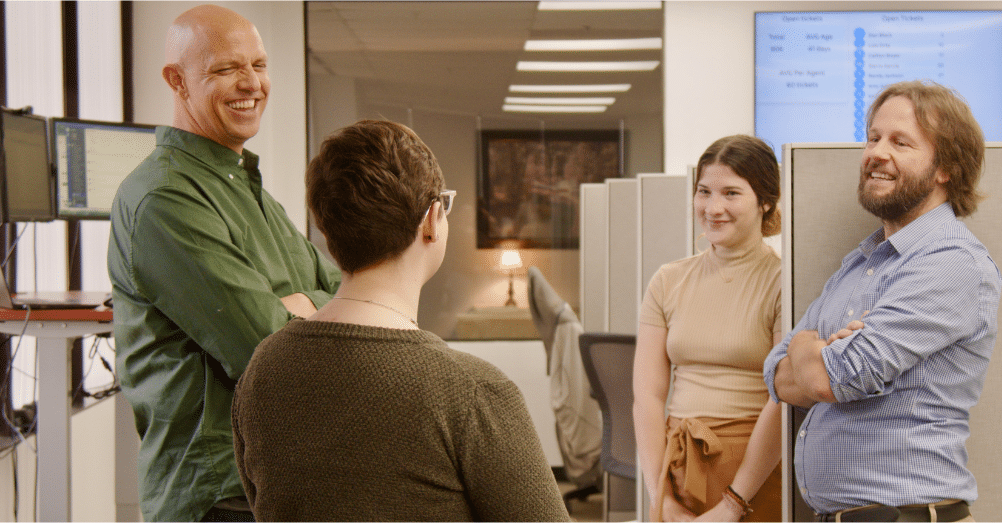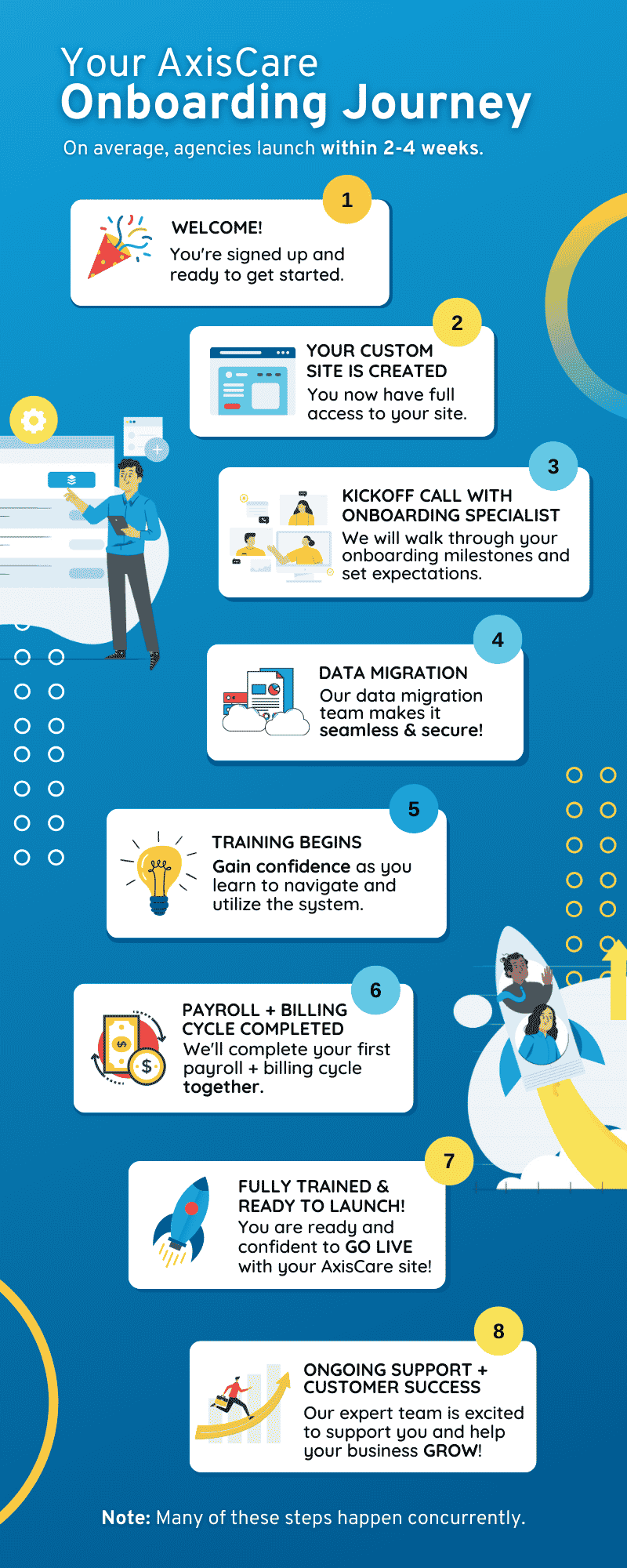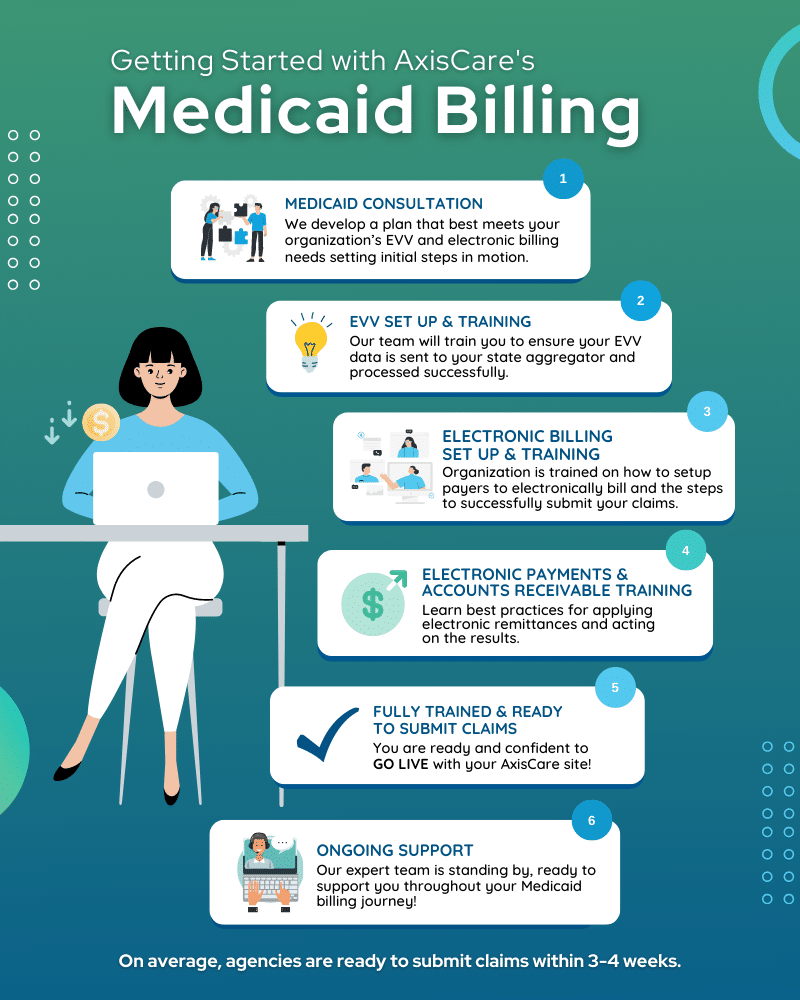What is EHR in Home Care?
Electronic Health Records (EHR) are digital files that contain a client’s entire medical history, including past diagnoses, medications, treatment plans, immunizations, and test results. They may also include other health data like their family health history, demographic information, and even pertinent details about their lifestyle.
In a home health context, these are living documents that are used to guide present and future care decisions. They are updated frequently as caregivers collect more information.
Understanding EHR for Home Health Agencies
Think back to the doctor’s appointments you had when you were younger. You might remember the receptionist leafing through a stack of manila folders in search of your personal file. That was then – and the digital age is now.
Keeping hard-copy documentation is a fallible framework. Client data can be transcribed incorrectly, files can get lost, and, in general, looking through piles of physical paperwork wastes a lot of precious time. EHR takes these manual processes online, greatly reducing the risk of human error and making it significantly easier to query the information.
Digital client files can be secured with encryption, passwords, and custom access controls. EHR keeps sensitive data under lock and key, making it easier for agencies to comply with strict HIPAA requirements and other privacy stipulations.
Key Features of EHR
EHR is more than just a handy way to store information. It can also integrate with other core functions, like insurance billing and caregiver management, to create a holistic solution that smooths out operational wrinkles.
EVV Compliance and Medicaid Billing Support
Instead of juggling multiple tools, agencies can use an all-in-one EHR solution to capture Electronic Visit Verification (EVV) data, like clock-in/out times, service location, and visit details, within the same platform as their scheduling, care documentation, and billing management. When these systems are integrated into one workflow, client information only needs to be inputted once, which reduces the risk of mismatched or incorrect data, key drivers of rejected coverage claims.
Government health agencies are notorious for enforcing stringent data compliance standards, and even the smallest of errors can get a claim kicked back. To mitigate cash flow issues and alleviate administrative burden, some EHR solutions are designed with Medicaid requirements in mind. They automatically format EVV data to meet state-specific reporting requirements, generate reports, and send data directly to the appropriate Medicaid portals.
Real-Time Communication and Scheduling
When home care stakeholders can all rely on a single source of truth – i.e., a centralized EHR database – everything runs more smoothly. Miscommunications can spiral into missed appointments, double-bookings, unfilled shifts, and as a result, frustrated staff and clients. By linking scheduling, EVV, and caregiver messaging in one place, agencies can prevent small errors from snowballing into costly mistakes.
Unified platforms also allow care teams to chat in real time using a secure centralized hub, adding another layer of protection against miscommunication.
Billing and Documentation Automation
Billing errors are a threat that looms large over home care agencies, as they typically lead to rejected or delayed claims. But with a purpose-built EHR for home health, agencies can reduce documentation processing time by up to 40% while improving their accuracy and compliance.
By prompting caregivers to enter information in specific fields, EHRs guide users through the workflow to ensure data is entered in exactly the right format and place. It’s all captured digitally and in real time, which means agencies can bill for services as quickly as possible instead of backtracking and correcting their work.
Integration With Existing Software and Point of Care Tools
It might feel intimidating to onboard a new platform, fearing that it will create friction within your workflow. But a well-structured EHR system should integrate seamlessly with any other point of care software you’re using, creating a holistic system that makes things simpler—not the other way around.
Integration creates a unified channel where scheduling, payroll, and compliance information can flow freely and exist in the same data lake. This makes it easier to bill clients and insurance agencies using verified visit information, thereby reducing the risk of delays and denials.
Ensuring Data Security and Compliance
In the home care space, protecting client information isn’t a flashy selling point; it’s legally and ethically required. That’s why all EHR platforms must meet strict data security standards, especially when it comes to HIPAA compliance. A well-built EHR will encrypt all sensitive health information, allow administrators to adjust the organization’s access permissions, and ensure records are both stored and transmitted securely.
Agencies that do not abide by these standards may be at risk of a hefty financial penalty, or worse, a lawsuit, operational disruptions due to auditors or investigations, and significant reputational damage.
Taking the Next Steps Toward EHR Adoption
The right EHR platform will be one purpose-built for the home care industry’s needs—one that can also support daily workflows like scheduling, EVV, documentation, and billing while staying compliant with HIPAA and Medicaid regulations. It should also support broad interoperability, allowing secure and seamless data exchange with state systems, payers, and third-party tools.
Use EHR Effectively With AxisCare
AxisCare is an all-in-one platform designed to help home care agencies achieve operational excellence. Our software automates and digitizes routine tasks like caregiver scheduling, client billing, report generation, compliance verification, and client information management, all bundled into a simple interface that anyone can learn with ease.
To know more about how we can streamline your EHR while taking the rest of your processes to the next level, request a free personalized demo.









